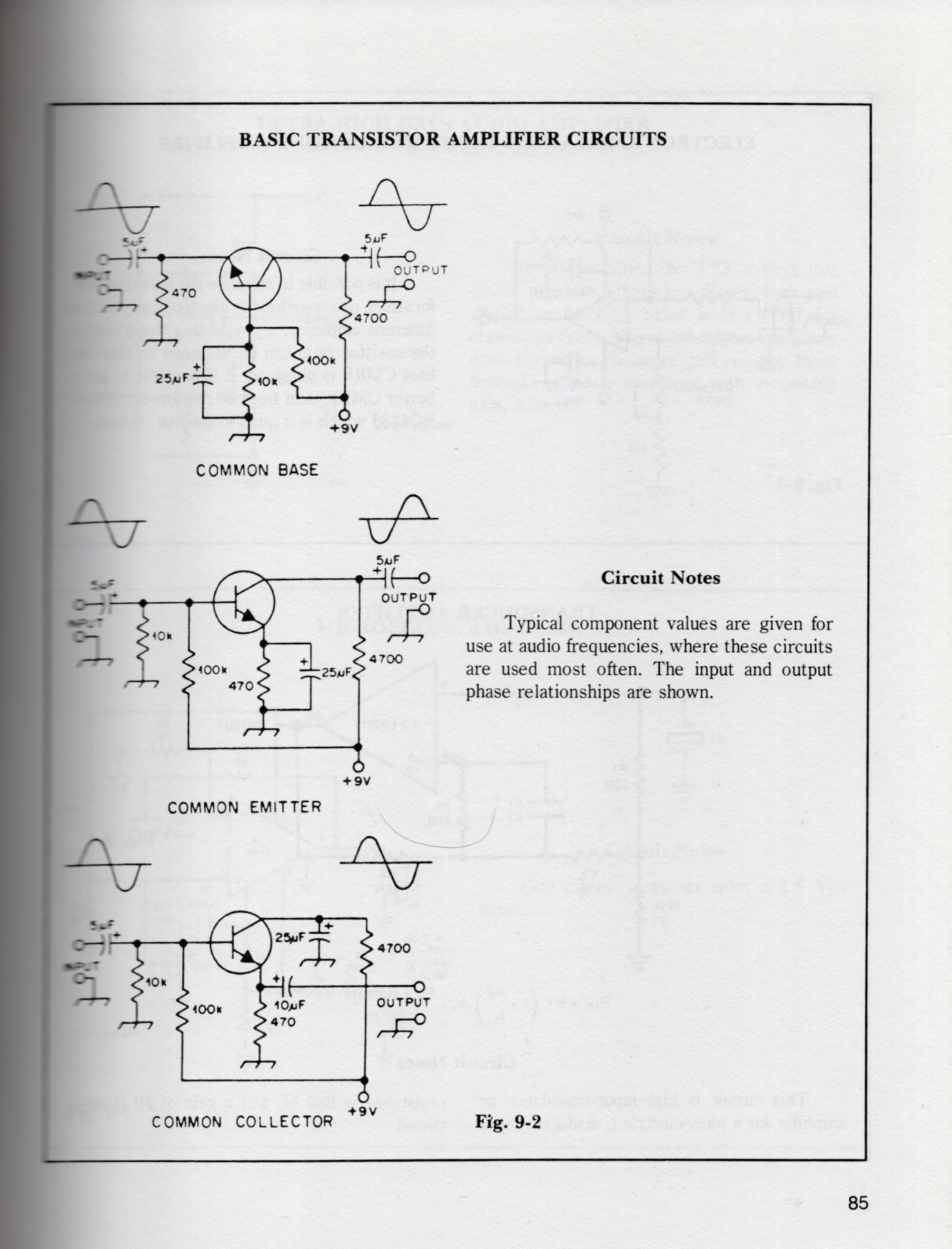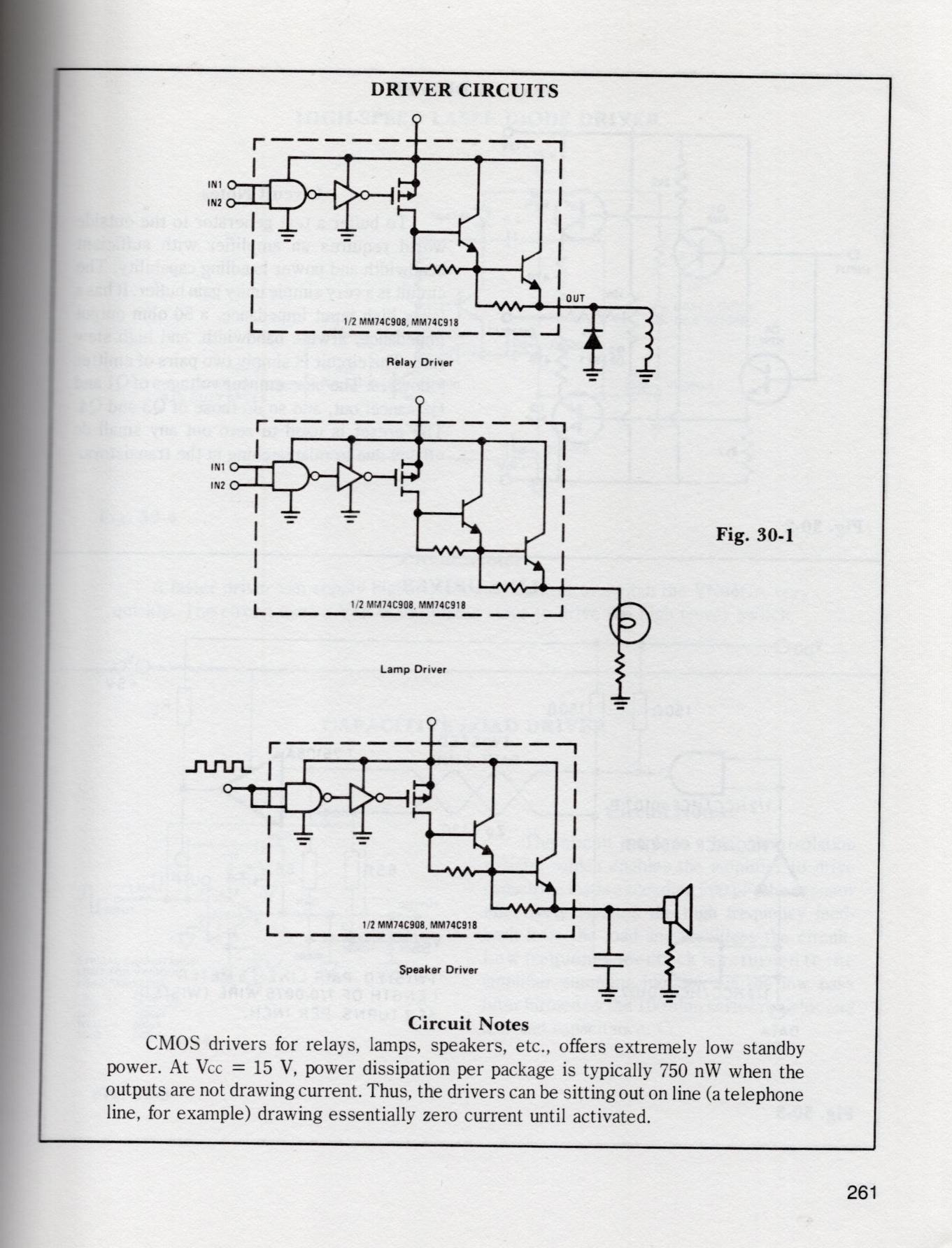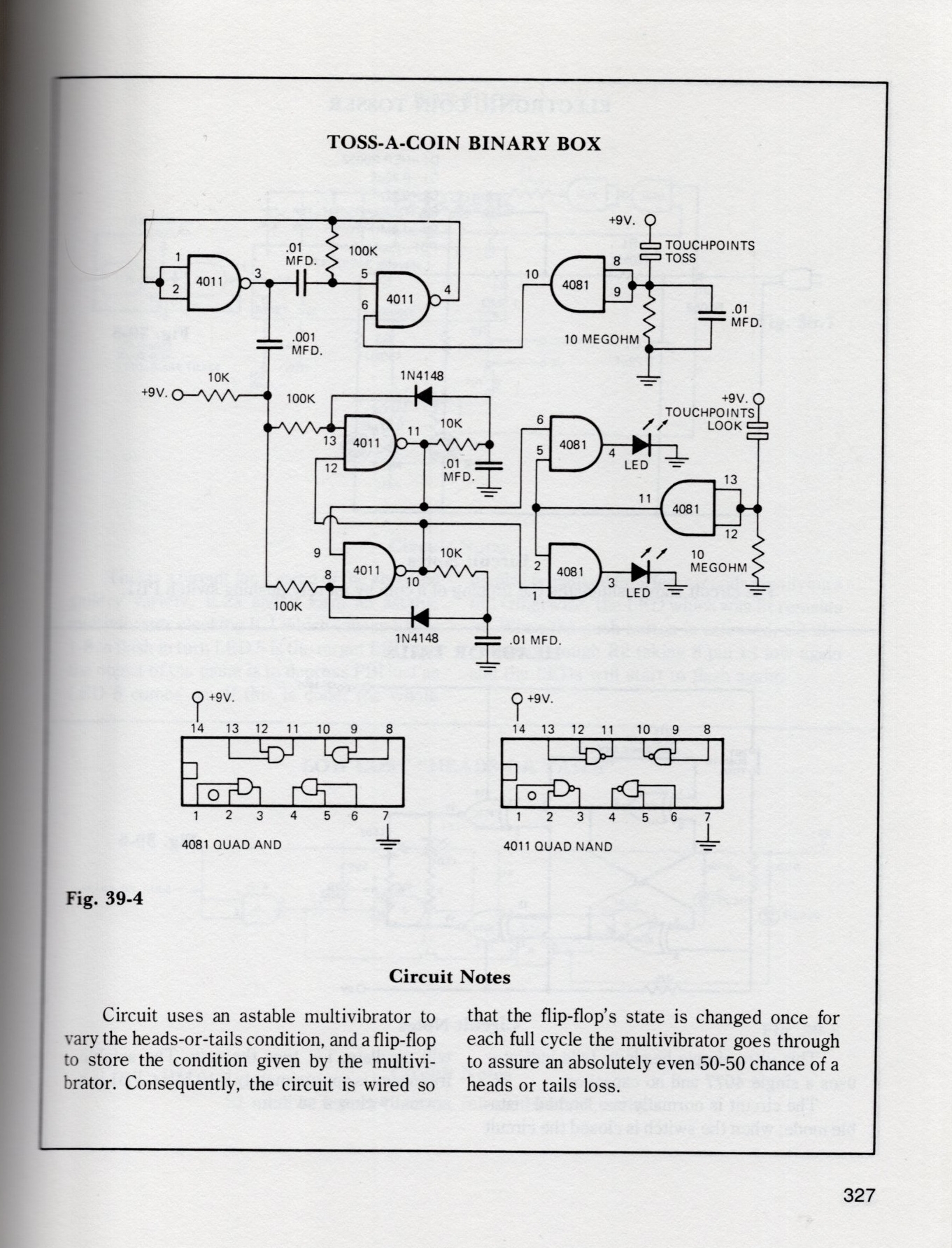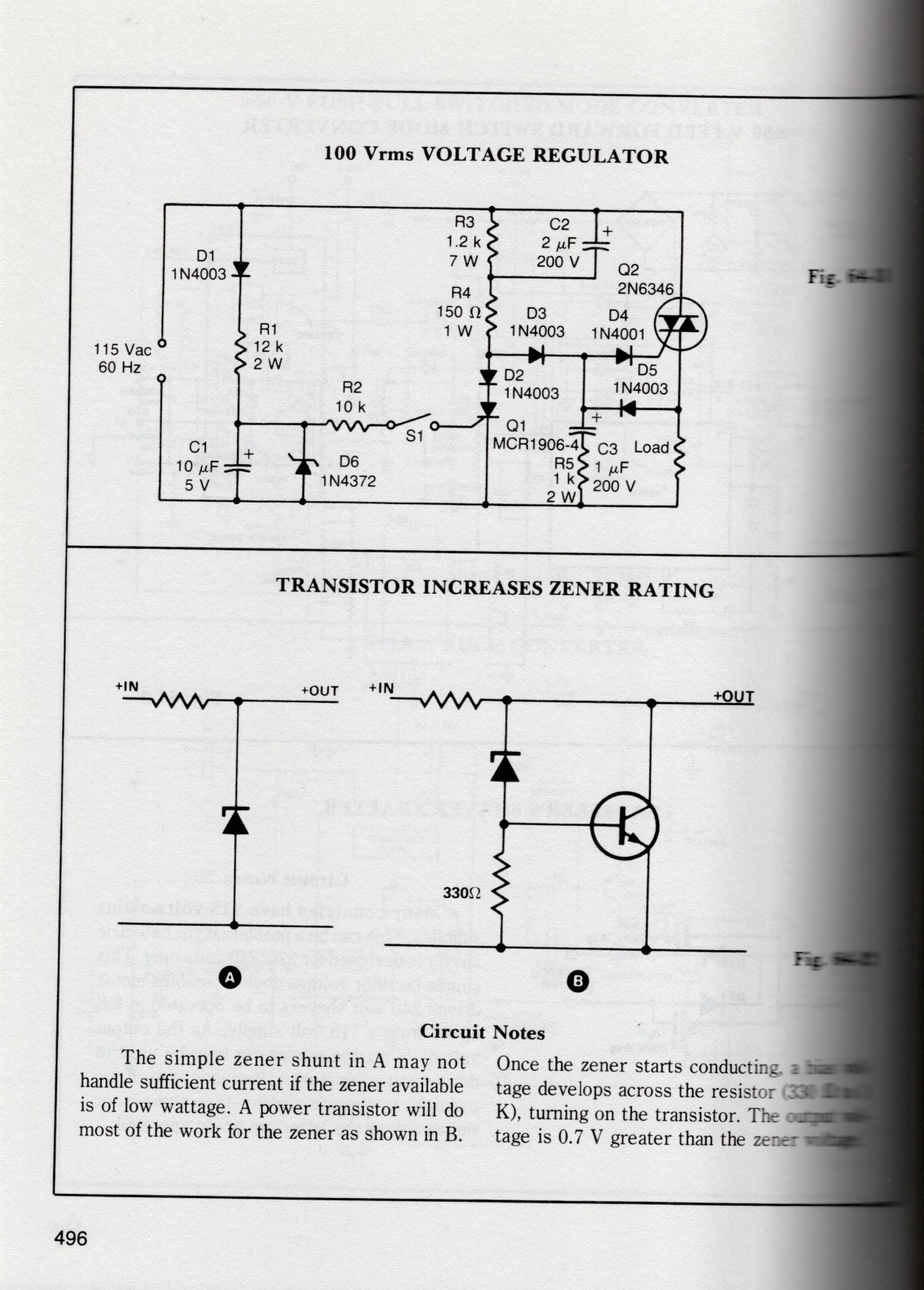A lot of good stuff available here: Analog Devices Resource Library.
Category Archives: Book
More Than 100 Sub-Circuit Designs From Texas Instruments
I have a new post on Hackaday: More Than 100 Sub-Circuit Designs From Texas Instruments.
Learning the Art of Electronics: Fig-1N.33: Circuit A Drives Circuit B | In The Lab With Jay Jay
This post is part of my video blog and you can find more information about this video.
You can support this channel on Patreon: patreon.com/JohnElliotV
Silly Job Title: Component Wrangler. I am the Component Wrangler!
In this video we continue to work our way through Learning the Art of Electronics. We have nearly finished the 1N DC Circuits chapter. Today we learned a new rule of thumb: when circuit A drives circuit B the output impedance of circuit A should be equal to or less than 10% of the input impedance of circuit B.
There is no prac this week, only theory. Next week we will complete this chapter and then we’re ready to proceed into our first lab chapter.
Thanks very much for watching! And please remember to hit like and subscribe! :)
Following is a product I use picked at random from my collection which may appear in my videos. Clicking through on this to find and click on the green affiliate links before purchasing from eBay or AliExpress is a great way to support the channel at no cost to you. Thanks!
Yum Cha 13MP HD Webcam With Mic USB Camera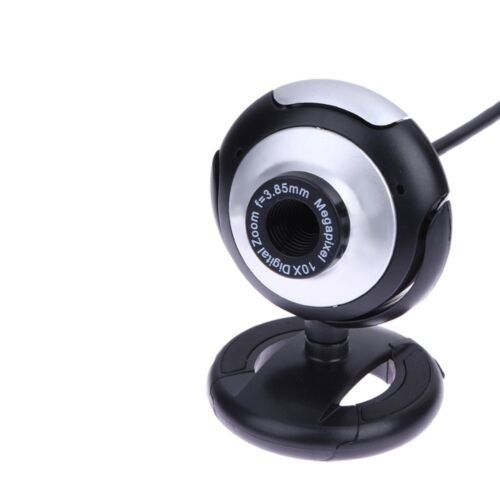 |
Let’s go shopping!
FREE Analog Engineer’s Circuit Cookbooks from Texas Instruments
Today over on the EEVblog forum I learned about the two ebooks available from Texas Instruments. One is for amplifier circuits and the other for data-conversion circuits, including both Analog-to-digital converter (ADC) circuits and Digital-to-analog converter (DAC) circuits. I had to sign up for an account before I could download…
Old Book Teardown #16: Encyclopedia of Electronic Circuits Volume 3 (1991) | In The Lab
This post is part of my video blog and you can find more information about this video.
You can support this channel on Patreon: patreon.com/JohnElliotV
Silly Job Title: Prime Hack. I am the Prime Hack!
In this video we take a look inside Encyclopedia of Electronic Circuits Volume 3 by Rudolf F. Graf.
Some circuits of interest included:
| Page | Circuit |
|---|---|
| 245 | Electronic Dice |
| 327 | Adder |
| 337 | Electrostatic Detector |
| 594 | On/Off Inverters |
Some things we needed to look up while flipping through:
CMRR is Common-Mode Rejection Ratio.
RIAA is Recording Industry Association of America.
RIAA equalization is a specification for the recording and playback of phonograph records, established by the Recording Industry Association of America (RIAA).
PUT is a Programmable Unijunction Transistor.
φ (phi) can represent an angle, typically the second angle mentioned, after θ (theta).
PEP is Peak Envelope Power.
For voltage signals you usually want high input impedance and low output impedance.
LVDT is a Linear Variable Differential Transformer.
NAB is North American Broadcasters. They defined phonograph standards similar to the RIAA’s.
Thanks very much for watching! And please remember to hit like and subscribe! :)
Following is a product I use picked at random from my collection which may appear in my videos. Clicking through on this to find and click on the green affiliate links before purchasing from eBay or AliExpress is a great way to support the channel at no cost to you. Thanks!
JYHealth Medical Digital Thermometer |
Let’s go shopping!
Old Book Teardown #15: Encyclopedia of Electronic Circuits Volume 2 (1988) | In The Lab
This post is part of my video blog and you can find more information about this video.
You can support this channel on Patreon: patreon.com/JohnElliotV
Silly Job Title: Digital Dancer. I am the Digital Dancer!
In this video we have a look inside Encyclopedia of Electronic Circuits Volume 2.
Circuits of particular interest were:
| Page | Circuit |
|---|---|
| 3 | Differential Voltage or Current Alarm |
| 33 | Low-Cost Chime Circuit |
| 34 | Sliding-Tone Doorbell |
| 109 | Demonstration Comparator Circuit |
| 151 | Crystal Tester |
| 274 | Precise Wave Generator |
| 321 | Back-Biased GaAsP LED Operates as Light Sensor |
| 341 | Magnetometer |
| 566 | Modified UFT Relaxation Oscillator Produces Clean Audio Sinusoids |
Some notes concerning things which came up:
SCS = Silicon-Controlled Switch: an SCS (Silicon-Controlled Switch) is a four-layer thyristor device — basically an SCR with an extra gate — that gives you extra control (including a way to force it off). It’s a member of the thyristor family used for controlled switching in low-power applications.
Ga = Gallium.
As = Arsenic.
P = Phosphorus.
Compander = compressor + expander. It’s a system (or device) that compresses the dynamic range of a signal before transmission or storage and then expands it back to (approximately) the original dynamic range at the receiver/playback end.
The NE570 / NE571 (and SA571) are dual compandor ICs: each chip contains two identical compressor/expander “kits” (full-wave rectifier → temperature-compensated variable-gain cell → op-amp + trim) used for dynamic range control and noise-reduction in audio/communications systems. They’re widely used as companders, VCAs, limiters/noise-gates and as the compressor/expander around BBD delay lines to reduce hiss.
β (beta) — also written hFE or hfe on datasheets — is the transistor’s current gain. For a bipolar junction transistor (BJT) it’s the ratio of collector current to base current: β = IC / IB.
Q (quality) factor: measures how selective or sharp a resonant system is. High Q → narrow bandwidth, slow damping (lots of ringing). Low Q → wide bandwidth, heavy damping (quickly dies out).
I asked ChatGPT to please explain damping and ringing.
The 5558 IC is a dual op-amp in the 1458/1558 family (often labelled LM1558 / MC1558 / 5558 depending on maker). These are general-purpose, internally-compensated dual operational amplifiers (audio, filters, integrators, buffers).
My programmable load is the ZKETECH EBD-A20H Electronic Load.
SCA = Subsidiary Communications Authorization / subcarrier (used for background music/data in FM radio broadcasting).
We encountered Chebyshev filters which are analog or digital filters that have a steeper roll-off than Butterworth filters, and have either passband ripple (type I) or stopband ripple (type II).
UJT = Unijunction Transistor, a three-terminal semiconductor device (Emitter E, Base1 B1, Base2 B2) with a single PN junction and an internal resistive path between B2 and B1. It’s widely used as a simple relaxation-oscillator/timing/trigger device because it shows a controlled negative-resistance region when the emitter is driven above a threshold.
PUT = Programmable Unijunction Transistor; a PUT is a three-terminal semiconductor device (Anode, Cathode, Gate) that behaves like a unijunction transistor but whose trigger (peak) point is set externally by resistors — i.e. it’s programmable. It’s essentially a four-layer PNPN device (closely related to SCRs in internal construction) with the gate used to set the firing threshold.
My anti-static monitor is an Auto-alarm Anti Static ESD Wrist Strap Tester Output Anti-static Online Monitor For Anti-static Electronic ESD Meter.
A squib is a small explosive which can be used as a detonator.
A “TR circuit” can mean variously:
- a T/R (transmit–receive) switch used in RF systems
- a transformer-rectifier (TR or TRU) — a transformer plus rectifier used for AC→DC power
- Tr often used as an abbreviation for rise time (tᵣ) when discussing pulse/transient performance
SSB = Single-SideBand — a form of amplitude modulation where the carrier and one of the sidebands are removed so only one sideband (upper or lower) is transmitted.
The 2N4871 is a classic silicon PN unijunction transistor (UJT) used for timing/oscillator and trigger circuits.
RTD = Resistance Temperature Detector, a temperature sensor that measures temperature by sensing the electrical resistance of a metal element, which changes predictably with temperature. RTD stands for Resistance Temperature Detector.
A Theremin is a type of musical instrument.
The 4069 is a hex inverter.
The 4046 is a Phase-Locked-Loop.
Thanks very much for watching! And please remember to hit like and subscribe! :)
Following is a product I use picked at random from my collection which may appear in my videos. Clicking through on this to find and click on the green affiliate links before purchasing from eBay or AliExpress is a great way to support the channel at no cost to you. Thanks!
Yizhan Digital Microscope notes notes |
Let’s go shopping!
Old Book Teardown #14: Encyclopedia of Electronic Circuits (1985) | In The Lab With Jay Jay
This post is part of my video blog and you can find more information about this video.
You can support this channel on Patreon: patreon.com/JohnElliotV
Silly Job Title: Tome Pumper. I am the Tome Pumper!
In this video we take a look inside the Encyclopedia of Electronic Circuits.
The pages which have circuits I thought were interesting and will consider building are: 358, 415, 420, 520, and 597.
Here are the pages I scanned while working through the book:
Thanks very much for watching! And please remember to hit like and subscribe! :)
Following is a product I use picked at random from my collection which may appear in my videos. Clicking through on this to find and click on the green affiliate links before purchasing from eBay or AliExpress is a great way to support the channel at no cost to you. Thanks!
Yum Cha 3pcs Universal Metal Spudgers |
Let’s go shopping!
Learning the Art of Electronics: Fig-1N.24: Applying the Thévenin model | In The Lab With Jay Jay
This post is part of my video blog and you can find more information about this video over here.
You can support this channel on Patreon: patreon.com/JohnElliotV
Silly Job Title: Switch Switcher.
In this video we build two circuits for Learning the Art of Electronics.
The pre-reading for today is up to and including page 18 of the course work. So if you have the book try to get that reading done.
In this video we test a circuit and its Thévenin model to see that they behave as expected. They do! But I’m still trying to get my head around all of the details…
I mention about my decade boxes. The good one is this one: Multicomp Pro MP701033 Resistor Box (I have ordered two more of these) and the crappy ones are these ones: Yum Cha J15026-2 6-Knob Resistor Box.
I also mention about the analog multimeters, this is the crappy one I have: Yum Cha MF-110A Analog VOM Handheld Multimeter and this is the slightly less crap one which I have on order: Pro’sKit MT-2207-C Analog VOM Handheld Multimeter.
In the video:
We use the METCAL PS-900 Soldering Station for soldering.
We use the EEVblog BM2257 Digital Multimeter to get our voltage and current readings.
We use the Riden RD6006 Bench Power Supply to power our test circuits.
We use the Brother P-Touch D210 Label Maker to label our circuits.
We use the Scotch Titanium Scissors to cut things.
We use the Carpenter Mechanical Pencil for writing our notes.
We use the Hakko CHP 3C-SA Precision Tweezers to do precision work.
We use the Plato Model 170 Wire Cutter to trim our leads and wires.
Thanks very much for watching! And please remember to hit like and subscribe! :)
Following is a product I use picked at random from my collection which may appear in my videos. Clicking through on this to find and click on the green affiliate links before purchasing from eBay or AliExpress is a great way to support the channel at no cost to you. Thanks!
JST XH2.54 Connector Kit |
Let’s go shopping!
Deep Work
A new post from Justin Sung: How to Effortlessly Enter DEEP WORK on Command. I assume “deep work” has something to do with Deep Work: Rules for Focused Success in a Distracted World. But basically I guess they are talking about flow.
Learning the Art of Electronics 1N.23
I made another false start for Learning the Art of Electronics the other day, you can see the results below. I am planning to re-record this particular video, the goal is to have that come out on Tuesday next week.

